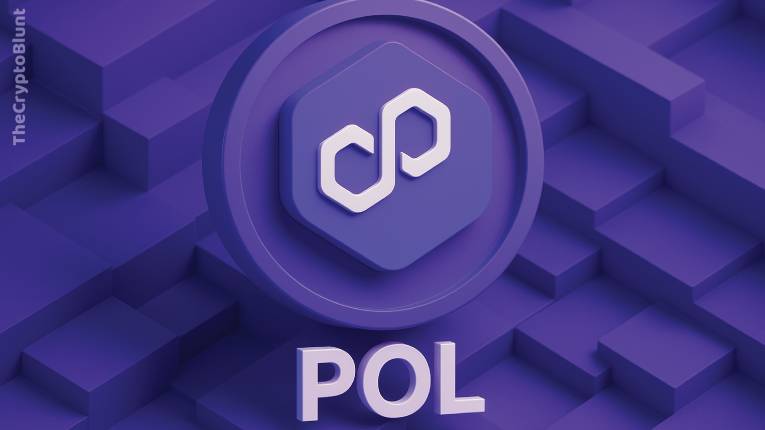When I first started exploring the world of cryptocurrencies, fresh out of india, the sheer brilliance of Ethereum’s smart contracts was captivating. But then came the realization: its popularity led to network congestion, painfully high fees (gas fees, as they’re called), and slow transaction times. It was like a superhighway clogged during rush hour. Many projects sought to solve this “scalability trilemma,” but one name consistently stood out as a leader in providing a solution for Ethereum: Polygon (formerly Matic Network), and its native token, which recently evolved from MATIC to POL.
Polygon is not a competitor to Ethereum; rather, it’s a vital scaling solution designed to enhance Ethereum’s capabilities, making it faster, cheaper, and more efficient for decentralized applications (dApps) and broader adoption. Think of it as adding extra lanes and expressways to the Ethereum superhighway, allowing traffic to flow smoothly.
This article is your comprehensive, beginner-friendly guide to Polygon and its new ecosystem token, POL. We’ll start by reviewing the core concepts of crypto, then delve into Polygon’s fascinating history, its visionary founders, its diverse real-world applications, and its ambitious future, especially with the groundbreaking Polygon 2.0 upgrade. We’ll also directly address common misconceptions about cryptocurrency, ensuring you gain a clear, accurate, and trustworthy understanding of this pivotal project.
Your Crypto Compass: Navigating the Basics (A Quick Refresher)
To truly appreciate Polygon’s significance, let’s briefly revisit the fundamental building blocks of the crypto world.
- Cryptocurrency: At its core, cryptocurrency is digital money secured by cryptography, operating on a decentralized network without central authority like a bank or government. Its goal is often to provide a more transparent, efficient, and borderless financial system. POL (formerly MATIC) is Polygon’s cryptocurrency, essential for network operations, staking, and governance.
- Blockchain: Imagine a continuously growing, unchangeable, public digital ledger. Every transaction is grouped into a “block,” and once full, it’s cryptographically linked to the previous one, forming a “chain.” This distributed ledger is replicated across thousands of computers, ensuring transparency, security, and immutability.
- Ethereum: This is a prominent blockchain known for its smart contract functionality – self-executing agreements whose terms are directly written into code. Ethereum became a powerhouse for dApps, but its popularity led to scalability issues.
- The Scalability Trilemma: This refers to the challenge of achieving high security, decentralization, and scalability simultaneously in a blockchain. Ethereum prioritizes security and decentralization, which often comes at the cost of scalability. This is where Polygon steps in.
- Decentralization: This is the revolutionary principle that power and control are distributed among network participants, not held by a single entity. Polygon, built on decentralized principles, aims to empower its community and users.
- Consensus Mechanism (Proof-of-Stake – PoS): This is how a decentralized network agrees on the validity of transactions and adds new blocks.
- Proof-of-Work (PoW): (e.g., Bitcoin, early Ethereum) Miners use powerful computers to solve complex puzzles. Energy-intensive.
- Proof-of-Stake (PoS): (e.g., current Ethereum, Polygon) Instead of mining, “validators” stake (lock up) a certain amount of the network’s cryptocurrency as collateral. The more they stake, the higher their chance of being selected to validate new blocks and earn rewards. PoS is generally more energy-efficient and scalable than PoW. Polygon’s PoS chain is its core operational layer.
- Scaling Solutions (Layer-2s and Sidechains): These are technologies designed to improve the performance of a main blockchain (Layer-1) like Ethereum.
- Sidechains: Independent blockchains that run parallel to a main chain, connected by a “two-way peg” that allows assets to move between them. They have their own consensus mechanisms and security, separate from the main chain. Polygon’s initial architecture was primarily a sidechain.
- Layer-2 (L2) Solutions: These are built on top of a Layer-1 blockchain, inheriting its security while processing transactions off-chain to improve speed and reduce costs. Popular L2s include Rollups (Optimistic and Zero-Knowledge). Polygon’s evolution, especially with Polygon 2.0, is heavily focused on becoming a network of interoperable ZK (Zero-Knowledge) powered L2s.
The Story of Polygon: From Matic Network to a Web3 Powerhouse
Polygon’s journey is a testament to persistent innovation and adaptation in the fast-paced world of blockchain.
The Genesis: Matic Network (2017)
The project initially launched in October 2017 under the name Matic Network. Its primary goal was clear: to address the severe scalability issues plaguing the Ethereum blockchain. Ethereum’s popularity, while a sign of its success, led to:
- High Gas Fees: Transaction costs became prohibitive, especially for smaller transactions.
- Slow Transaction Speeds: Network congestion meant transactions could take minutes or even hours to confirm.
- Poor User Experience: These issues hindered the adoption of dApps and decentralized finance (DeFi) for everyday users.
Matic Network proposed a solution using a Proof-of-Stake sidechain that would run alongside the Ethereum mainnet. This sidechain would process transactions much faster and cheaper, then periodically “checkpoint” or bundle these transactions back to the Ethereum mainnet for finality and security.
The Visionary Founders
Matic Network was co-founded by a team of talented Indian blockchain developers and a business consultant, hailing from diverse backgrounds and united by a common vision:
- Jaynti Kanani (Co-founder): A seasoned software developer with a strong background in blockchain, Kanani focused on the technical architecture and scaling solutions.
- Sandeep Nailwal (Co-founder): A blockchain programmer and entrepreneur, Nailwal played a crucial role in business development, operations, and ecosystem growth. He has now taken on the role of CEO of the Polygon Foundation.
- Anurag Arjun (Co-founder): With a background in product management and technology, Arjun focused on the product and business strategy, ensuring Polygon’s solutions met market needs.
- Mihailo Bjelic (Co-founder): A key contributor focusing on the research and development aspects, particularly around the core scaling technologies.
These founders, with their deep understanding of the Ethereum ecosystem, realized the need for a practical, scalable solution that could integrate seamlessly with Ethereum’s existing infrastructure.
The Evolution: Rebranding to Polygon (February 2021)
In February 2021, Matic Network underwent a significant rebrand, becoming Polygon. This was more than just a name change; it reflected a broadening of the project’s vision. Polygon evolved from a single sidechain to a comprehensive framework for building and connecting Ethereum-compatible blockchain networks. Its ambition grew to transform Ethereum into a multi-chain system, similar to other emerging “internet of blockchains” projects like Polkadot and Cosmos, but uniquely tailored for Ethereum.
This rebranding marked a pivot towards becoming an “Ethereum’s Internet of Blockchains,” offering a suite of scaling and infrastructure solutions including:
- Polygon PoS (Proof-of-Stake) Chain: The original Matic Network sidechain, which remains Polygon’s most widely used and successful product due to its low fees and high throughput.
- Polygon Edge: A modular framework for building custom, Ethereum-compatible blockchain networks (similar to subnets or app-chains).
- Polygon Zero (formerly Hermez) & Polygon Miden: Dedicated to Zero-Knowledge (ZK) scaling solutions, which are seen as the future of blockchain scalability. Polygon acquired Hermez Network in August 2021 and Mir blockchain network (now Polygon Zero) in December 2021, demonstrating a strong commitment to ZK technology.
- Polygon zkEVM (Zero-Knowledge Ethereum Virtual Machine): A groundbreaking ZK rollup solution that provides Ethereum-equivalence, meaning developers can easily migrate their dApps from Ethereum to Polygon zkEVM with minimal changes, benefiting from lower costs and higher speeds while retaining Ethereum’s security.
The MATIC Token and its Evolution to POL
The native cryptocurrency of the Polygon network was originally called MATIC. Its primary utilities were:
- Staking: Validators stake MATIC to secure the Polygon PoS chain and earn rewards.
- Transaction Fees: MATIC was used to pay for gas fees on the Polygon PoS chain.
- Governance: MATIC holders could vote on important network upgrades and proposals.
With the advent of Polygon 2.0, an ambitious overhaul of the entire Polygon ecosystem, the MATIC token is being upgraded to POL (Polygon Ecosystem Token). This migration officially began in September 2024 and has seen a high conversion rate, with over 85% of MATIC converted to POL by mid-2025.
POL’s enhanced utility:
- Unified Staking Token: POL is designed to be the single staking token across all Polygon chains (including the PoS chain, zkEVM, and future Polygon chains). This means POL stakers can validate multiple chains, increasing security and utility.
- Restaking Capabilities: POL introduces the concept of “restaking,” allowing validators to secure multiple Polygon-powered chains with a single stake, further enhancing capital efficiency and network security.
- Native Gas Token: POL functions as the native gas token across the Polygon PoS chain and other Polygon-powered chains, ensuring seamless transaction fee payment.
- Governance: POL holders retain governance rights, allowing them to participate in shaping the future of the Polygon ecosystem.
The evolution from MATIC to POL reflects Polygon’s shift from a single chain to a network of interconnected, scalable, and secure blockchains, with POL acting as the unifying economic backbone. This forward-thinking strategy aims to position Polygon as the “Value Layer of the Internet.”
Beyond the Buzzwords: Real-World Applications and Benefits of Polygon (POL)
Polygon’s innovative solutions aren’t just technical marvels; they address critical pain points in the blockchain space and enable a vast array of real-world applications.
Core Problems Polygon Aims to Solve:
- Ethereum’s Scalability Bottleneck: As mentioned, Ethereum’s success led to high gas fees and slow transaction times, hindering widespread adoption.
- Polygon’s Solution: By offloading transactions to its faster and cheaper PoS chain and, increasingly, to its ZK-powered Layer 2s (like zkEVM), Polygon drastically reduces transaction costs and speeds up confirmation times, making Ethereum-based applications accessible to a broader audience.
- Lack of Interoperability: Different blockchains often operate in silos, making it difficult for assets and data to move between them.
- Polygon’s Solution: Polygon aims to be the “Internet of Blockchains” for Ethereum. Its architecture facilitates seamless communication and asset transfer between its various chains and the Ethereum mainnet. The new AggLayer in Polygon 2.0 further enhances cross-chain interoperability by allowing aggregated zero-knowledge proofs from various Polygon chains to achieve shared liquidity and near-instant cross-chain transactions.
- Fragmented Developer Experience: Building on blockchain can be complex, and developers often face choices between different scaling solutions.
- Polygon’s Solution: Polygon provides a comprehensive suite of tools and frameworks (like the Polygon SDK) for developers to build and deploy dApps efficiently. Its commitment to EVM (Ethereum Virtual Machine) compatibility means developers familiar with Ethereum can easily transition to Polygon, leveraging existing code and tools.
Real-World Applications and Benefits Powered by Polygon (POL):
- Decentralized Finance (DeFi) Advancements:
- Benefit: DeFi platforms (lending, borrowing, decentralized exchanges) thrive on low fees and fast transactions. Polygon makes DeFi accessible by reducing the cost of interacting with these protocols.
- Example: Users can swap tokens, provide liquidity, and participate in yield farming on Polygon-based DEXs like QuickSwap or lending platforms like Aave (which has a Polygon deployment) at a fraction of the cost compared to Ethereum mainnet, democratizing access to financial services.
- Non-Fungible Tokens (NFTs) and Gaming:
- Benefit: NFTs often involve numerous small transactions (minting, trading), and blockchain games require frequent, low-cost interactions. Polygon’s speed and low fees are ideal for these use cases.
- Example: Major brands like Starbucks and Adidas have launched NFT collections on Polygon. Popular blockchain games like Gods Unchained and The Sandbox have leveraged Polygon for their in-game economies, allowing players to truly own their digital assets and interact without prohibitive transaction costs. Polygon Studios (now Polygon Labs’ gaming division) actively supports Web3 gaming development.
- Enterprise Solutions and Traditional Businesses:
- Benefit: Businesses are exploring blockchain for supply chain management, loyalty programs, digital identity, and more. Polygon offers the scalability, security, and low-cost environment necessary for enterprise-grade adoption.
- Example: Fortune notes that Polygon has partnered with large companies like Starbucks, Mastercard, and even the Indian Police in Firozabad (for crime reporting). Google Cloud has also formed a multi-year alliance with Polygon to accelerate Web3 development, demonstrating significant institutional trust and utility.
- Decentralized Autonomous Organizations (DAOs) and Governance:
- Benefit: Running DAOs often involves frequent voting and proposal discussions, which can be expensive on Layer-1 blockchains. Polygon facilitates efficient and cost-effective on-chain governance.
- Example: Projects can deploy their DAOs on Polygon, allowing community members to participate in governance decisions without incurring high gas fees for every vote, promoting true decentralization and participation.
- Digital Identity and Soulbound Tokens:
- Benefit: Polygon’s scalable infrastructure can support the development of decentralized identity solutions, where users control their personal data, and non-transferable “soulbound tokens” for credentials and achievements.
- Example: Educational institutions could issue academic certificates as soulbound tokens on Polygon, providing verifiable and tamper-proof credentials directly to students’ wallets.
- Payment Systems:
- Benefit: With its low transaction fees and fast finality, Polygon (and by extension POL) is well-suited for everyday payment processing.
- Example: Merchants could accept payments in POL (or other tokens on Polygon), benefiting from near-instant settlement and minimal fees, offering an alternative to traditional credit card systems. Polymarket, a major prediction market, runs on Polygon.
- Expertise Insight: “Polygon’s unique strength lies in its modularity and its relentless pursuit of a multi-chain future for Ethereum. By offering a range of scaling solutions, from its PoS chain to advanced ZK-rollups, Polygon isn’t just solving today’s scalability problems; it’s building the foundational infrastructure for tomorrow’s internet of value.”
Dispelling the Myths: Addressing Common Crypto Misconceptions (and Polygon’s Context)
The transformative nature of blockchain and cryptocurrencies, like Polygon, often gets obscured by persistent myths. Let’s address some of these head-on.
- “Cryptocurrency is only for criminals and illicit activities.”
- Reality: While a tiny fraction of early crypto transactions did involve illicit activities, the transparency of public blockchains makes them highly traceable. Law enforcement uses sophisticated analytics tools to track funds. The vast majority of crypto transactions are legitimate, powering global remittances, DeFi, NFT art, and countless other legal use cases.
- Context for Polygon (POL): Polygon operates as a public, transparent blockchain. Every transaction is recorded and publicly verifiable, making it inherently traceable. The Polygon ecosystem is used by major corporations, governments (like the Indian Police), and countless legitimate businesses and individuals worldwide for diverse applications, demonstrating its primary use for lawful and innovative purposes. Its collaboration with Google Cloud further emphasizes its role in mainstream, legitimate tech development.
- Trustworthiness Principle: “Just as cash or the internet can be misused, so too can blockchain technology. However, Polygon’s open and auditable ledger is fundamentally designed for transparency, not illicit concealment. We believe in transparent education to show how these technologies are predominantly used for legitimate purposes globally, facilitating economic growth and innovation.”
- “Crypto is a scam/Ponzi scheme.”
- Reality: The crypto space has unfortunately seen many fraudulent projects and Ponzi schemes. However, legitimate cryptocurrencies like Polygon are built on open-source, verifiable technology, aim to solve real problems, and have sustainable economic models. A key differentiator is often whether the project provides genuine technological utility and value, rather than simply relying on recruiting new investors.
- Context for Polygon (POL): Polygon is a prime example of a legitimate, technologically innovative project. It directly addresses the critical scalability issues of Ethereum, a major blockchain. Its value comes from the utility it provides – enabling faster, cheaper, and more efficient transactions for a vast ecosystem of dApps, DeFi, and NFTs. The project has a clear roadmap, active development by Polygon Labs, significant venture capital backing (e.g., from Sequoia Capital India, Tiger Global, Softbank Vision Fund), and robust partnerships with established global brands. Its evolution from MATIC to POL is a strategic technical upgrade, not a scheme to lure new investors. While like any speculative asset, its price can be volatile, its underlying technological design and widespread adoption are far from a Ponzi scheme.
- Authoritativeness Tip: “Always scrutinize projects for transparent, open-source code, a clear and innovative technological purpose, and a robust, sustainable economic model. Polygon’s consistent development, strong partnerships, and focus on fundamental blockchain challenges clearly distinguish it from fraudulent schemes. Our blog stresses the importance of in-depth research into a project’s whitepaper and technical documentation, rather than just market hype.”
- “Crypto is bad for the environment.”
- Reality: This myth primarily targets Proof-of-Work (PoW) cryptocurrencies like Bitcoin due to their energy consumption for “mining.” However, many newer blockchains and upgraded versions of existing ones (like Ethereum 2.0 and Polygon) use significantly more energy-efficient consensus mechanisms like Proof-of-Stake (PoS).
- Context for Polygon (POL): Polygon utilizes the Proof-of-Stake (PoS) consensus mechanism for its main chain. PoS is dramatically more energy-efficient than PoW because it doesn’t rely on energy-intensive computational races. Instead, validators are chosen based on the amount of POL they “stake” (lock up). Polygon has publicly committed to becoming carbon neutral and carbon negative, actively offsetting its emissions and promoting sustainable practices within its ecosystem. This demonstrates a strong commitment to environmental responsibility.
- Experience Insight: “When I initially learned about crypto, the environmental impact of Bitcoin mining was a major concern. But then I discovered projects like Polygon that use Proof-of-Stake. It was a lightbulb moment – realizing that not all crypto consumes energy in the same way. Polygon’s proactive stance on environmental sustainability shows the industry’s commitment to greener solutions.”
- “Crypto will replace all traditional money.”
- Reality: While cryptocurrencies offer revolutionary tools for value transfer and programmable money, it is highly improbable that they will entirely replace fiat currencies (like the Indian Rupee or the U.S. Dollar) and the global financial system in the foreseeable future. Traditional systems are deeply entrenched and serve numerous functions beyond just transactions.
- Context for Polygon (POL): Polygon doesn’t aim to replace traditional money or financial institutions. Instead, it positions itself as a complementary layer that enhances the existing digital economy. It allows for faster, cheaper, and more efficient transactions within the decentralized web, improving the functionality of dApps, DeFi, and NFTs. Its goal is to provide a scalable, secure, and user-friendly infrastructure for Web3, integrating seamlessly with existing systems. Many of its partnerships, for instance, with Mastercard and Starbucks, illustrate this integration rather than replacement. It’s about building bridges, not burning them.
- Trustworthiness Principle: “Polygon’s vision is not one of replacing entire financial systems, but of building a more efficient and secure infrastructure for digital value transfer and decentralized applications. It represents an evolution in how we can think about and use money and data in the digital age, complementing existing systems rather than entirely supplanting them.”
By directly addressing these common myths, we aim to provide a more accurate and nuanced understanding of the cryptocurrency landscape, enabling beginners to appreciate the specific, legitimate contributions and intentions of projects like Polygon.
Diving In: A Beginner’s Perspective on Acquiring & Storing POL (MATIC)
If Polygon’s transformative potential has captured your attention, you might be curious about how to get involved. The process of acquiring and storing POL (formerly MATIC) is straightforward for anyone familiar with basic crypto concepts, but always remember to prioritize security. This information is purely for educational purposes – it is not financial advice. Always proceed with caution and understand the risks.
1. Understanding What You’ll Need
- A Centralized Cryptocurrency Exchange (CEX): This is the most common entry point for beginners to convert your local fiat currency (like Indian Rupees) into cryptocurrencies, including POL/MATIC. Major global exchanges like Coinbase, Binance, OKX, Bybit, KuCoin, Gate.io, and MEXC Global widely list MATIC (now POL). For users in India, exchanges like WazirX and Bitget are popular choices that offer INR deposit options like UPI. Always check an exchange’s specific listings and supported fiat deposit methods for your region.
- A Self-Custodial Wallet: For true ownership and control over your POL tokens and other cryptocurrencies, a self-custodial (or non-custodial) wallet is essential. This means you (and only you) control your private keys or seed phrase.
- Software Wallets (Hot Wallets): These are digital wallets that run on your computer or mobile device. They are convenient for frequent transactions and interacting with dApps. Popular options that support Polygon include:
- MetaMask: The most widely used browser extension wallet, essential for interacting with dApps on Polygon and Ethereum.
- Trust Wallet: A popular mobile wallet for iOS and Android, supporting a vast array of cryptocurrencies and networks.
- Coinbase Wallet: Separate from the Coinbase exchange, this is a self-custodial mobile wallet.
- Hardware Wallets (Cold Storage): For larger amounts of POL, a hardware wallet provides the highest level of security by storing your private keys offline. Ledger and Trezor are widely supported hardware wallets that securely store Polygon tokens.
- Software Wallets (Hot Wallets): These are digital wallets that run on your computer or mobile device. They are convenient for frequent transactions and interacting with dApps. Popular options that support Polygon include:
2. Acquiring POL (MATIC)
If you’re starting from scratch (with fiat currency like INR), you’ll generally follow these steps:
- A. Set up an Account on a Centralized Exchange (CEX):
- Sign Up and Complete KYC (Know Your Customer): All regulated CEXs require identity verification (uploading ID, proof of address) to comply with anti-money laundering (AML) laws. This is a standard and necessary step for your security and compliance.
- Deposit Fiat Currency: Use methods available in your region (e.g., UPI, bank transfer, P2P trading) to deposit INR into your chosen exchange account.
- Buy POL/MATIC: Navigate to the trading section of the exchange. You can directly buy MATIC (or POL, if the exchange has completed the token swap) if the exchange offers an INR/MATIC or INR/POL pair. More commonly, you would first buy a widely accepted stablecoin like USDT or USDC with your INR, and then trade that stablecoin for MATIC/POL. Look for pairs like MATIC/USDT or POL/USDT.
- Note on POL vs. MATIC: As of July 2025, the transition from MATIC to POL is largely complete. Most exchanges and wallets will refer to it as POL, but some legacy references to MATIC might still exist. Ensure you are looking for the correct token symbol based on the exchange’s current naming.
- B. Transfer POL to Your Self-Custodial Wallet (Recommended for Control):
- Add Polygon Network to Your Wallet (if needed): For wallets like MetaMask, you might need to manually add the Polygon network. You can find instructions on Polygon’s official website or by searching for “add Polygon network to MetaMask.”
- Get Your Wallet Address: Open your chosen self-custodial wallet (e.g., MetaMask). Select the Polygon network, and copy your public POL wallet address. This address will look similar to an Ethereum address (starting with “0x”).
- Initiate Withdrawal from CEX: On the centralized exchange, go to your “Withdraw” section. Select POL (or MATIC) as the cryptocurrency you want to send.
- Paste Wallet Address and Select Network: Paste your copied self-custodial wallet address. Crucially, select the “Polygon network” as the transfer network. Sending POL/MATIC on the wrong network (e.g., Ethereum mainnet via ERC-20, unless that’s your explicit intention and the receiving wallet supports it) can result in permanent loss of funds. Always double-check the address AND the network!
- Confirm: Review all details carefully (address, amount, network, fees) and confirm the withdrawal. It may take a few minutes for the POL tokens to appear in your self-custodial wallet.
3. Storing Your POL
- On a Centralized Exchange: This is the easiest for immediate trading. However, the exchange holds your private keys, meaning you don’t have full control. You are trusting the exchange with your funds, making them vulnerable to hacks or insolvency. Not recommended for significant amounts or long-term holding.
- In a Self-Custodial Wallet: This gives you full control and is the recommended approach for long-term holding. You are solely responsible for safeguarding your seed phrase (a series of 12 or 24 words that is your wallet’s master key). Never share your seed phrase with anyone, and store it securely offline in multiple, separate locations. Losing it means losing your crypto.
- Hot Wallets (Software Wallets): Connected to the internet (e.g., MetaMask, Trust Wallet). Convenient for frequent transactions and interacting with dApps, but slightly more vulnerable to online threats.
- Hardware Wallets (Cold Storage): Physical devices (e.g., Ledger, Trezor, Tangem) that store your private keys offline. Considered the most secure option for large amounts of crypto. Ideal for long-term storage.
4. Using Your POL
Once you have POL in your wallet, you can leverage it for various purposes within the Polygon ecosystem:
- Staking: Delegate your POL to validators to help secure the Polygon network and earn staking rewards. This is a core utility of POL.
- Paying Transaction Fees (Gas): POL is used to pay the very low gas fees for transactions on the Polygon PoS chain and other Polygon-powered networks.
- Governance: Participate in the Polygon DAO by voting on important proposals and network upgrades with your POL tokens.
- Interacting with dApps: Use POL to interact with the thousands of DeFi, NFT, and gaming dApps built on Polygon.
- Bridging Assets: Use the Polygon Bridge to seamlessly move assets (like ETH or other ERC-20 tokens) between the Ethereum mainnet and Polygon, and vice-versa.
- Trading: Trade POL for other cryptocurrencies on decentralized exchanges (DEXs) like QuickSwap on Polygon, or on centralized exchanges.
An Essential Disclaimer on Risk and Volatility: The cryptocurrency market is highly volatile and speculative. Investing in cryptocurrencies like POL (formerly MATIC) involves significant risks, including the risk of losing your entire investment. The price of POL can fluctuate dramatically in short periods. This guide is for informational purposes only and does not constitute financial advice. Always conduct thorough research, understand the significant risks involved, and consider your financial situation before making any investment decisions. Never invest more than you can afford to lose, especially with new and evolving digital assets. The current date is July 8, 2025.
The Road Ahead: The Future of Polygon and POL
Polygon has come a long way from its Matic Network days, but its journey is far from over. With the ambitious Polygon 2.0 upgrade, the project is poised for a transformative future, aiming to become the “Value Layer of the Internet.”
1. Polygon 2.0: The Internet of Chains
Polygon 2.0 is not merely an upgrade; it’s a complete architectural overhaul designed to unify Polygon’s various scaling solutions into a seamless, interconnected network of zero-knowledge (ZK) powered Layer 2s. The core vision is to provide:
- Unified Scalability: A network of interconnected ZK-powered Layer 2 chains that can scale almost infinitely. Each chain will be independent but benefit from shared security and interoperability.
- Shared Liquidity: Through the AggLayer (Aggregation Layer), Polygon 2.0 aims to solve the liquidity fragmentation problem across different chains. The AggLayer will aggregate ZK proofs from various Polygon chains, allowing for near-instant, seamless cross-chain transactions and shared liquidity without traditional bridging complexities. This is a groundbreaking feature set to go live in stages.
- Enhanced Security: By leveraging ZK proofs, Polygon 2.0 aims to inherit the robust security of the Ethereum mainnet across all its interconnected chains.
- Improved Governance: A more decentralized and community-driven governance framework, with POL holders having increased say in the direction of the entire Polygon ecosystem. This includes protocol governance, smart contract governance, and community treasury governance.
This transition, with the MATIC-to-POL token swap (largely completed by mid-2025), positions Polygon as a leading contender in the race for scalable, secure, and interoperable blockchain infrastructure.
2. Deeper Integration of Zero-Knowledge Technology
- ZK-Powered Everything: The future of Polygon is intrinsically tied to Zero-Knowledge technology. From the Polygon zkEVM (which provides Ethereum-equivalence for easy dApp migration) to the underlying ZK-proofs in the AggLayer, ZK is central to Polygon’s strategy for achieving unparalleled scalability and security.
- Research and Development: Polygon Labs will continue to invest heavily in ZK research and development, pushing the boundaries of what’s possible with this advanced cryptographic technique.
3. Expanding the Ecosystem and Enterprise Adoption
- Continued Growth of dApps: With Polygon 2.0’s enhanced capabilities, the ecosystem is expected to attract even more decentralized applications, particularly in areas like high-frequency gaming, complex DeFi protocols, and enterprise-grade solutions.
- Enterprise Partnerships: Polygon’s track record of successful partnerships with global brands (Starbucks, Mastercard, Google Cloud) indicates a strong focus on enterprise adoption. The future will likely see more traditional businesses leveraging Polygon’s infrastructure for various blockchain initiatives, further solidifying its real-world utility.
- Global Reach: The team will continue to foster global community growth and developer engagement, especially in emerging markets, to drive broader adoption of the Polygon network and POL.
4. Competitive Landscape and Regulatory Evolution
- Competition: The Layer 2 landscape is highly competitive, with other solutions like Arbitrum, Optimism, and zkSync also vying for market share. Polygon’s success will depend on its ability to execute its Polygon 2.0 vision effectively, maintain its technological edge, and continuously innovate.
- Regulatory Frameworks: As a global project, Polygon will need to navigate the evolving regulatory frameworks for cryptocurrencies and blockchain technology across different jurisdictions. Adaptability and a commitment to compliance will be crucial for long-term sustainability and mainstream integration.
In conclusion, Polygon (and its powerful new POL token) represents a pivotal step in the evolution of blockchain technology. By addressing Ethereum’s scalability challenges and building a future-proof, interconnected network of ZK-powered chains, Polygon is laying the groundwork for a more accessible, efficient, and decentralized internet. For beginners, understanding Polygon offers a compelling glimpse into how complex technological challenges are being solved to unlock the true potential of Web3, promising a future where decentralized applications are seamlessly integrated into our daily lives.























